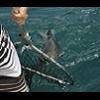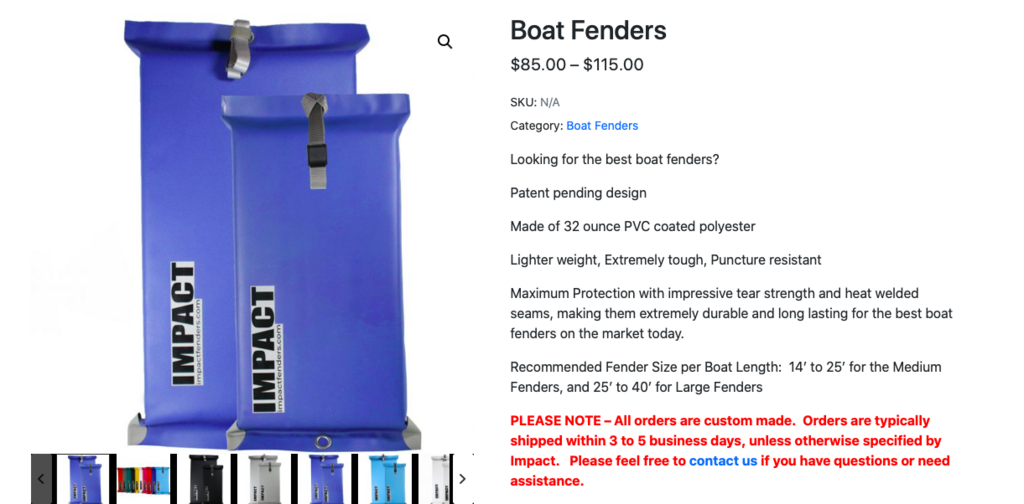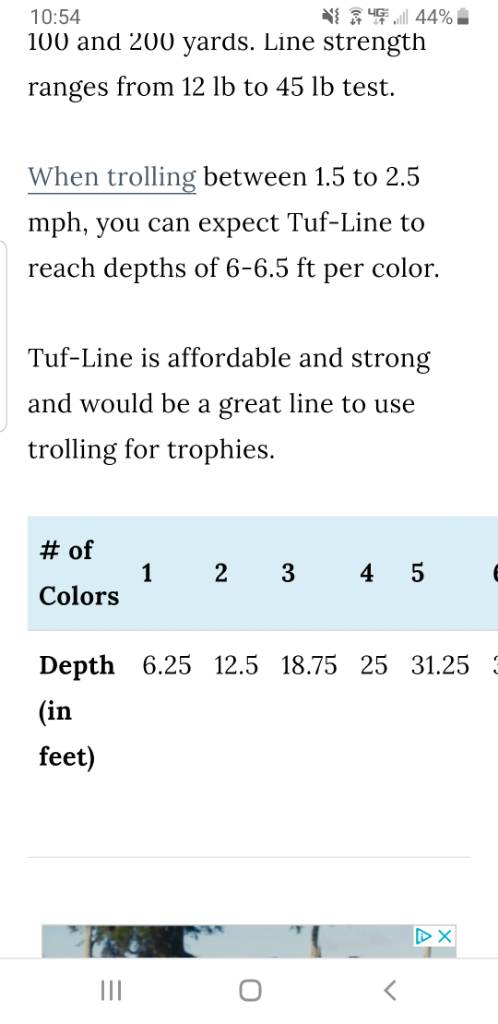-
Posts
1,540 -
Joined
-
Last visited
Content Type
Profiles
Forums
Events
Gallery
Store
Everything posted by TyeeTanic
-

DEC Announces Actions to Protect Salmon River Fish Populations
TyeeTanic replied to mudflat's topic in Open Lake Discussion
Yankee, well, what is happening is what you stated in your second sentence. From the river mouth to a certain point, the rivers are fishable (legally). But north of a certain point on all rivers I know (I don't know them all, but a lot of them), it's declared fish sanctuary. No one can fish above that point legally. Some of the sanctuaries aren't that far from the lake, others are way up the tributary. Lately, the local towns have been prohibiting access to the rivers ... but that isn't from the Ministry of Resources. They are either concerned with COVID or they are concerned about the garbage left behind by anglers. So fishing isn't prohibited in the river, but fishing from the shore (the land the city owns) is prohibited. Still, there are many tributaries to fish in Canada. I get what you are saying about catching a salmon in a ditch ... but let's be fair here. Those staging fish are there to do one thing ... spawn. So why target them at all. I'd say if we are all going to be serious about closing the rivers to spawning salmon, then fishing them within say 1/2 mile of the river mouth should also be banned ... because whether a pissed off salmon takes your plug or not ... we all know a spawning salmon is being targeted. -

DEC Announces Actions to Protect Salmon River Fish Populations
TyeeTanic replied to mudflat's topic in Open Lake Discussion
Yankee, what do you mean Canada closes their tribs? I can go fishing on Bronte River right now if I want to. Ganaraska is only closed at Port Hope because the Town has put bi-laws in place due to COVID. Actually all they closed is access to the river from land ... I don't think they have jurisdiction to the river ... that is governed by the Province I believe. One thing I'd like to point out ... do you think it's okay for boaters to be fishing staging salmon? They are all congregated at the mouth of the rivers ... so how is that any more ethical than someone standing on the pier chucking spoons? -
-
As others have pointed out, add drag to both sides of the boat. Sure you can use chutes, but I know guys in the past have spoken about putting in 5 gallon buckets with holes drilled through the bottom. That drag, on both sides, will help to keep the boat stabilized, not only going straight, but side to side rocking.
-

What Weight Downrigger Balls
TyeeTanic replied to Chicong's topic in Questions About Trout & Salmon Trolling?
I'm not sure your comment on splitting hairs ... is that on the difference between depth and distance on a sonar? If it is ... that is incorrect ... as you go deeper, the discrepancy between true depth and what is displayed on the sonar becomes enormous, especially if you are running anything lower than a 12 lb downrigger weight. For instance ... on a 10 lb weight ... if you have 140 ft of cable out ... sonar might catch the weight and say you are 140 ft down ... but in fact, you're probably closer to 100 down. The blowback is enormous, and you aren't even close to 140 ft down. Now, if you are aiming to be 30 ft down ... sure, the difference between where the sonar says you are, and where you probably are is only like 5 ft. -
-

What Weight Downrigger Balls
TyeeTanic replied to Chicong's topic in Questions About Trout & Salmon Trolling?
The blowback on anything less than 12 lbs is A LOT! I had a smart troll and measured it for 8 lb, 10 lb and 12 lb weights. Even with 12 lb you normally had to have about 20% more cable out to get to the desired depth. 10 lb was ridiculous ... 8 lb was impossible to get deep. As others point out, you should use the heaviest your downrigger and gunwale can support ... and hopefully that is at least 12 lbs. -
Save your money, be patient ... get the Fishhawk.
-
It's easier to let the outside lines out first ... on setting 3 preferably, with longer rods (10 ft) ... after that inside rods on setting 1 with 8 ft poles. You also ideally want the inside rods to be deeper ... both in terms of dive slope (hence setting 1 on dipsey) and overall depth. The reasons are: (1) when you let a dipsey out, there's no "bite" in the water ... no drag, so it stays closer to the center of the boat and dives quicker. If you put the inside lines first, and then deploy the outside line quickly ... it will fall straight down behind the boat deep and then when you put the drag on, it will pull to the side and likely cross into the inside diver line. There's a way to avoid this ... and many guys do this when they get a hit on an outside line, and want to put that line back out again ... you just have to let it out REALLY slow, to make sure the outside dipsey has bite (drag) in the water, and stays high and out to the side .... it needs to have enough bite in the water to swing OVER and above the inside line. (2) when the lines are out ... as you know if a dipsey pops it goes towards the center of the boat and up in the water column. If the outside line was deeper than the inside line, it will almost definitely cross into the inside line. It is possible to get into these situations even if the inside line is at 1 and outside at 3, if you have little line out on the inside line ... meaning it is targeting shallower water. Rather the inside line should be getting you into deeper parts of the water (and it is more effective at doing so because dipsey is on setting 1) ... and this way, the outside line will normally pass right over the inside line if it takes a hit.
-
I'd say the captain has a duty to assess whether the situation is an emergency or not. You will not be able to fully assess any situation if your 500 ft from a boat and can't hear what the captain of the distressed vehicle is saying. What if they have been stranded for hours, and without water, with children onboard? What if they have no way to contact anyone? You may say, yes, they were unprepared ... but that don't meant too much, if it means people turn up dead ... it all just becomes a tragedy, and for the guy that looked away ... well he/she is responsible in part for that tragedy. God forbid if weather turns ugly all of a sudden 2 hours after you left them stranded! I'm not crapping on you, I get what you are saying ... but I think the other guy seemed to not even be interested in helping at all, or diagnosing the issue ... he just didn't want to waste 30 minutes of fishing, by the sounds of it. Not good! I would have taken a photo and posted it up for people to see who the douche bag is. In the least, lines should be pulled up, vessel should be safely approached, plan of action should be agreed on, and if the functional vehicle is not able to safely tow ... fine, but at least establish comms with tow, ensure coordinates are available, and technically stay with boat until help has arrived.
-
I would be getting off the lake in a real hurry if I saw that, even in a 30 ft boat.
-

Six Rod Set-Up....Go
TyeeTanic replied to SmilinEd1's topic in New York Fishing Reports - Lake Ontario (South Shore)
Copper line is dense, and sinks on it's own ... you get like 20ft per 100ft out .... so lots of guys like 300' to 400' copper. Of course the terminal tackle (size of paddle, fly/spoon/meat) imposes more or less drag on the line ... so that lifts the line out of the water more or less. -

Six Rod Set-Up....Go
TyeeTanic replied to SmilinEd1's topic in New York Fishing Reports - Lake Ontario (South Shore)
6 to 8 ft long ... I've used sliders ... just use a snap swivel and connect to the main line. It will fall down about 1/3rd the depth of your main line. Some used fixed cheaters ... they basically attach an elastic that can snap, so it holds it in place, and they can go a bit deeper then. -

Dumb things I do to catch more fish
TyeeTanic replied to KilliansRed's topic in Open Lake Discussion
I always say that .... heeeere fishy, fishy, fishy, fishy, fishy! Of course in a Ernie voice. -

Six Rod Set-Up....Go
TyeeTanic replied to SmilinEd1's topic in New York Fishing Reports - Lake Ontario (South Shore)
2 riggers on spoons, 2 wirelines with SD/fly, 2 copper 300' and 400' on boards with paddle, meat. -

Steelhead technique
TyeeTanic replied to leadcore troller's topic in Questions About Trout & Salmon Trolling?
I fish Lake O ... so not sure if it all applies. I catch more steels on spoons than anything else. Try all kinds of colors, but green, blue is probably where I'd start. My favorite is the 42nd spoon, regular (3") and 4" for kings by the way. They are definitely higher in the water column than kings. We often catch then in 52F water. I know Erie is shallower, so that may change things up ... you probably have warmer water top to bottom. Speed may be an issue, I think you go slower for Walleye ... for steels about 2.5 mph is normally where we start and then go up/down 0.5 mph from there. -
Church Tackle TX 44 boards. Don't go any smaller than that. Trust me... I've replaced mine, until I got to the TX 44's
-

How to connect leadcore to mono backing?
TyeeTanic replied to Auzure's topic in Questions About Trout & Salmon Trolling?
Why not braid backing ... first of all, you'll get WAY MORE on the reel, and I think the knot is way more secure too. -
Blue works, green is good too ... but mostly the trick is to have something with glow. How deep are you talking?
-

Trouble landing with copper
TyeeTanic replied to Matt ching's topic in Questions About Trout & Salmon Trolling?
One thing that happens with the long wire is that fish take a run for the boat, and it's hard to feel that .... so the line slacks. Fish off. The only thing I know to do is to keep that rod as high up in the air as possible ... and having a long rod for the copper helps for that ... then you just have to be able to react fast enough to keep that slack off. Also, did you notice the fish jumping out of the water (likely then to be a rainbow) ... that makes it really challenging to keep the fish on. -
Yeah it can get bad sometimes, especially if you also have a cross wind pushing your boat sideways. A mate of mine had his rigger cable go into a prop, and he was using 16 lb torpedo weights ... it was insane.
-
Man, at that boat speed I'm surprised it's happening. Anyhow, all I can say is that underwater currents may have played a game with you, or even a good wind that was pushing the boat sideways, so when you think those dipsey lines are off to the side, they aren't, only resolution is to keep that copper dead center of stern until it's all out, and then hook up your planer board ... I wouldn't prematurely move the copper line to the side while it is still deploying ... you now know why.
-
Perplexed ... what boat speed are you at when you deploy? Obviously it's sinking fast, or the dipsey lines are way too high. You sure the dipsey isn't popping prematurely?
-
I think one advantage of the backing is you CAN get a good knot between the braid and the wire line. Direct on the arbor ... not sure I'd trust anything.
-
If I can offer some input. As others have said, speed is important ... doesn't take much more or less to dramatically impact the depth. Second is your terminal tackle. If you're pulling a big paddle, it's going to create more drag and lift the line up. I suggest putting braid on as backing .... first of all it doesn't create as much drag in the water as mono will, and you will be able to get WAY more backing on that reel ... 150 yards is NOTHING. A 25 lb king will take all of that plus some. Second thing it allows you to do is attach a torpedo weight right after you let out all the leadcore ... attach that after about 5 ft of braid, and THEN you will get the extra depth you are looking for!




